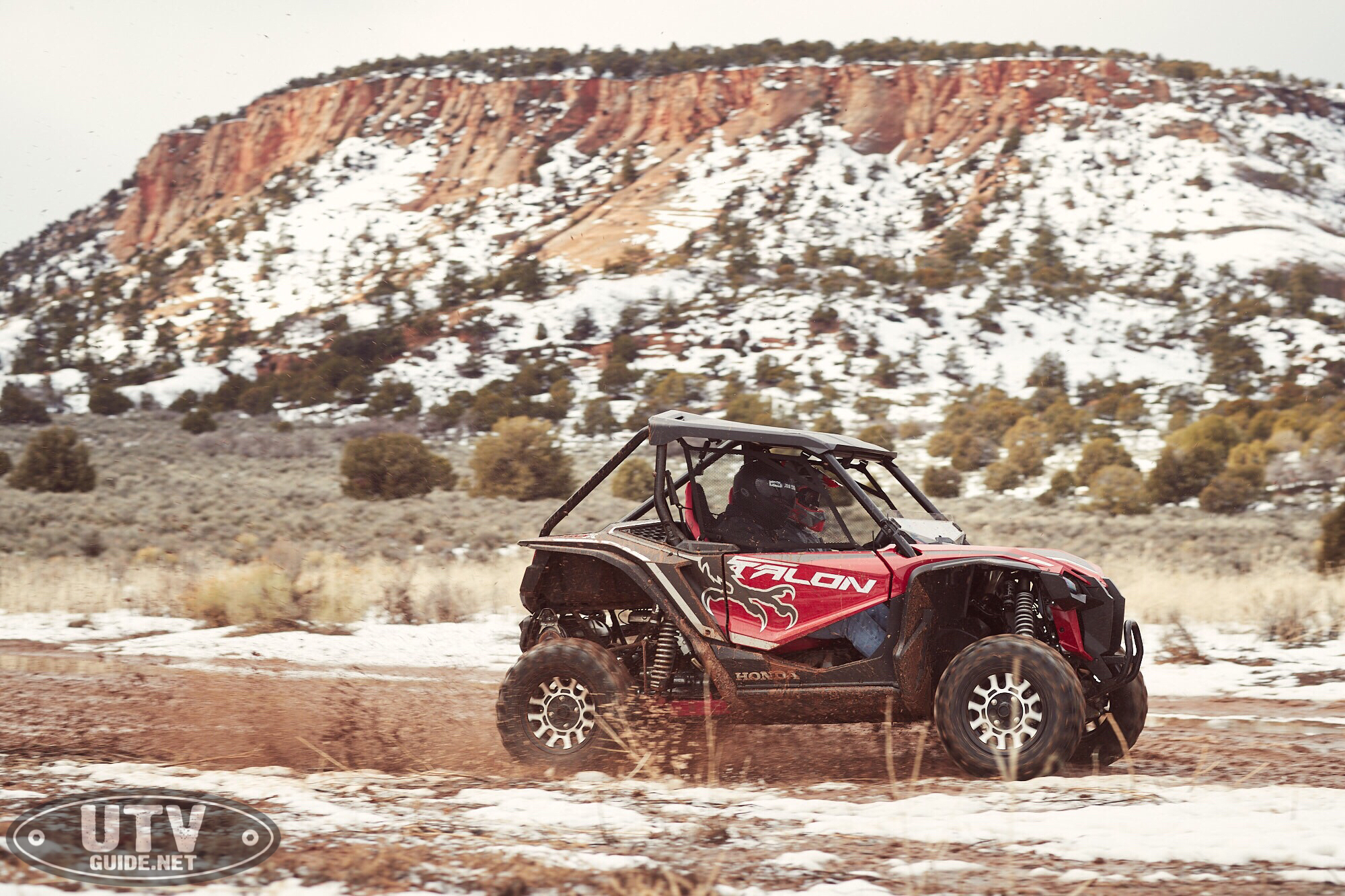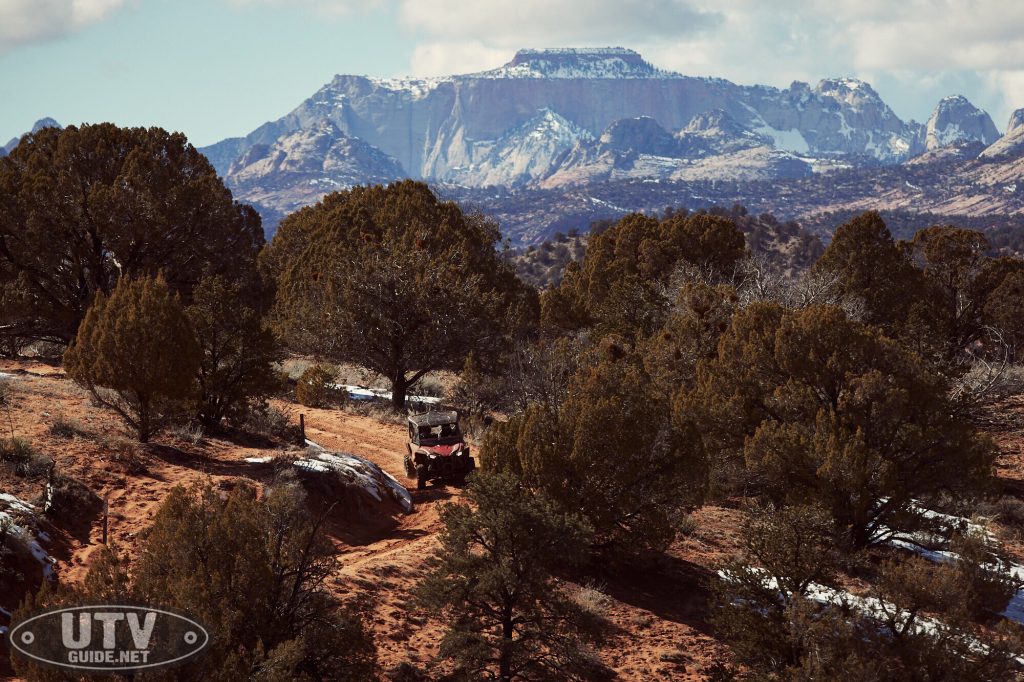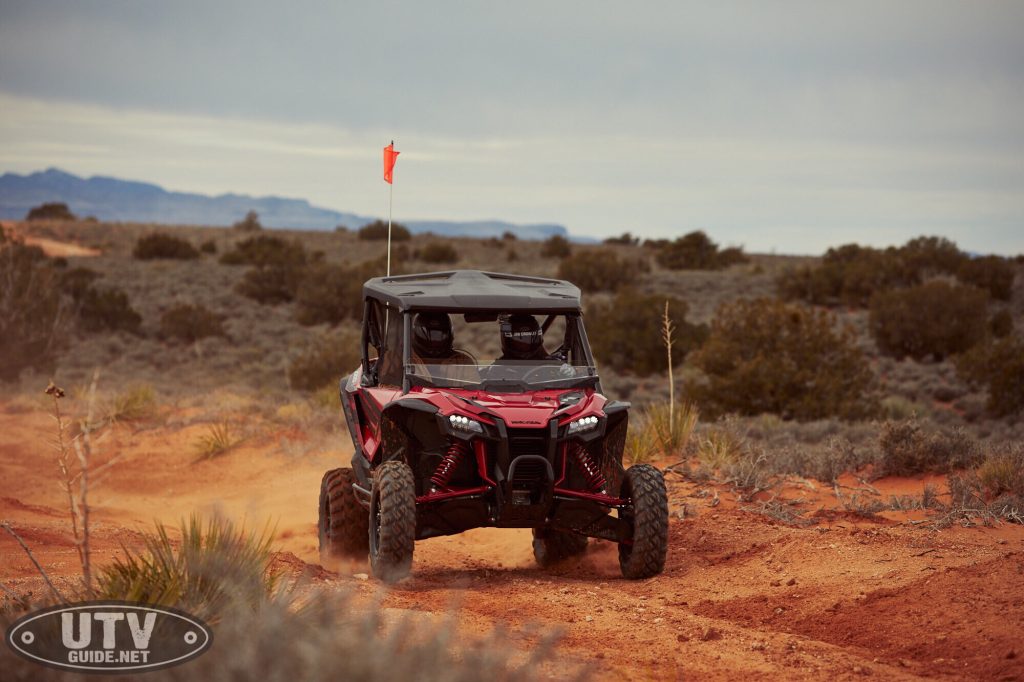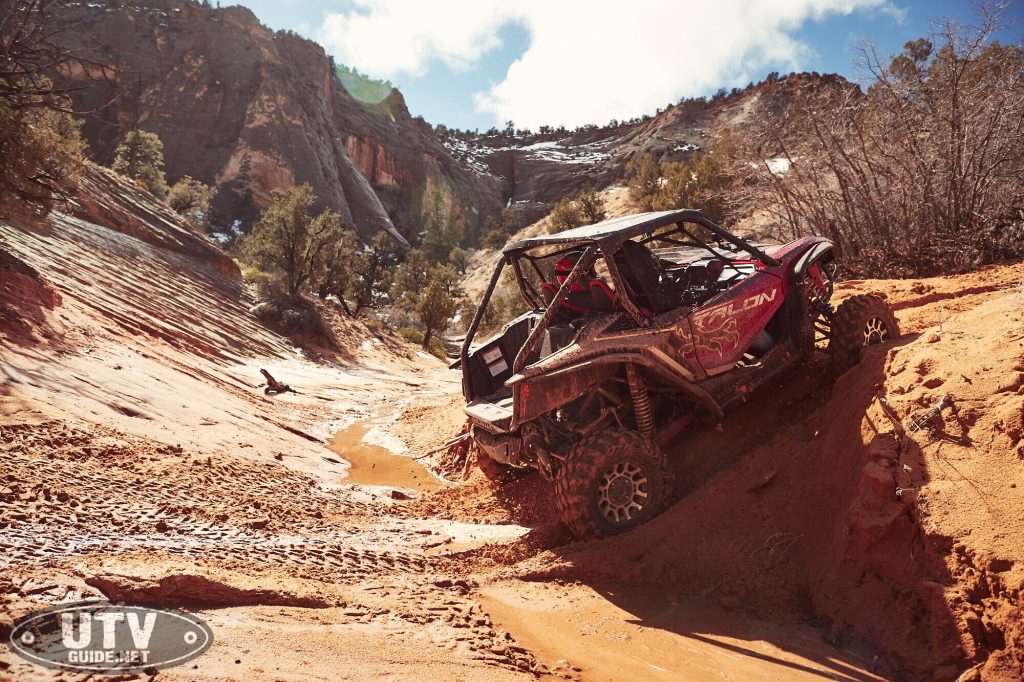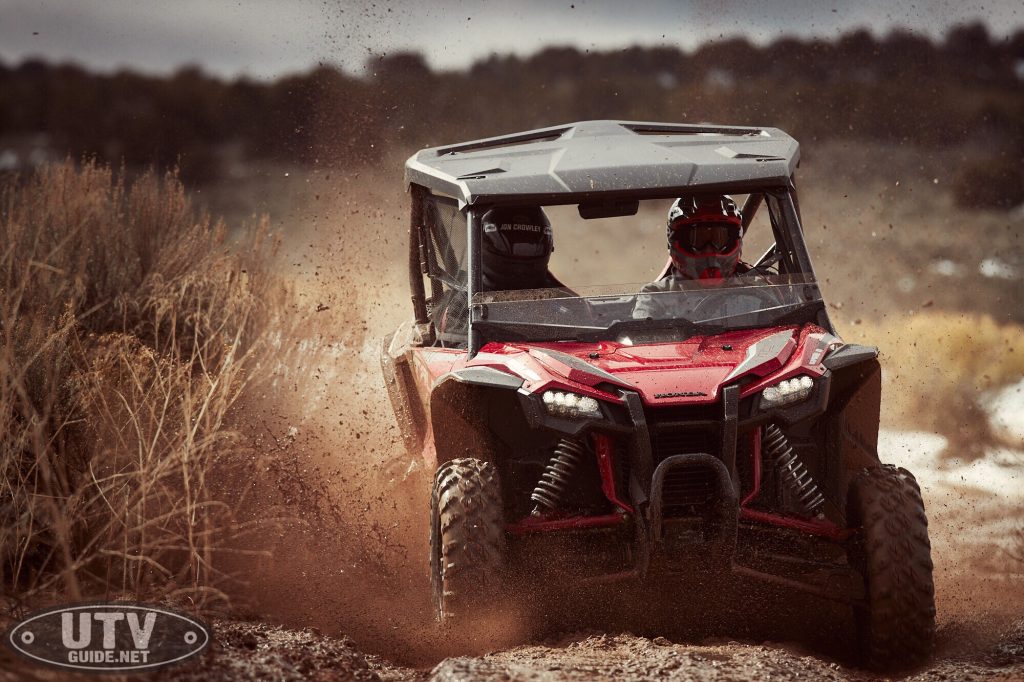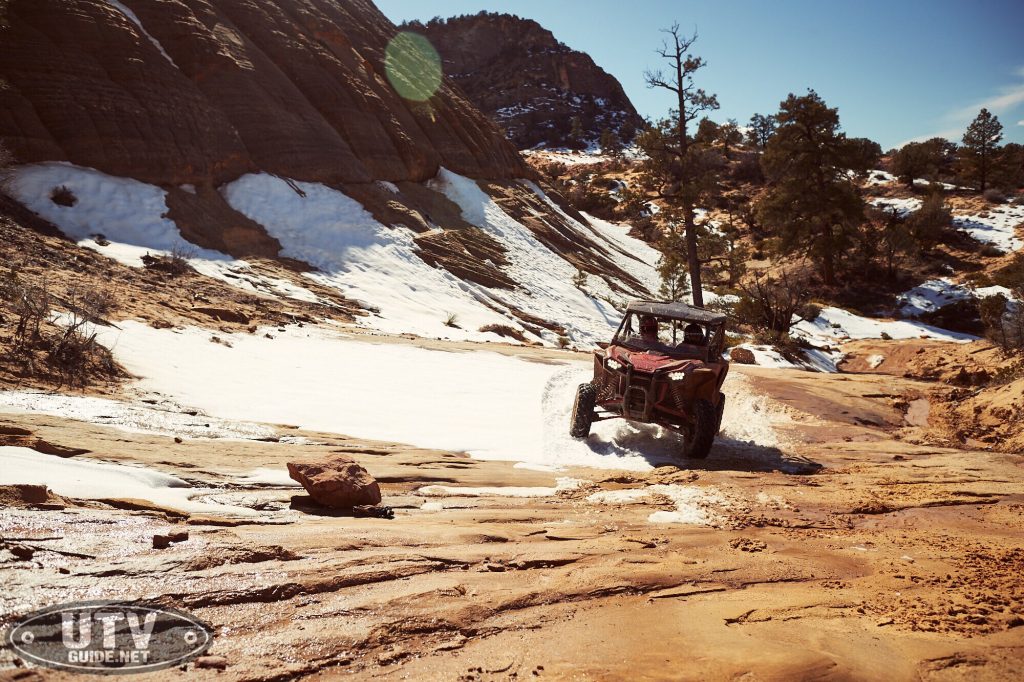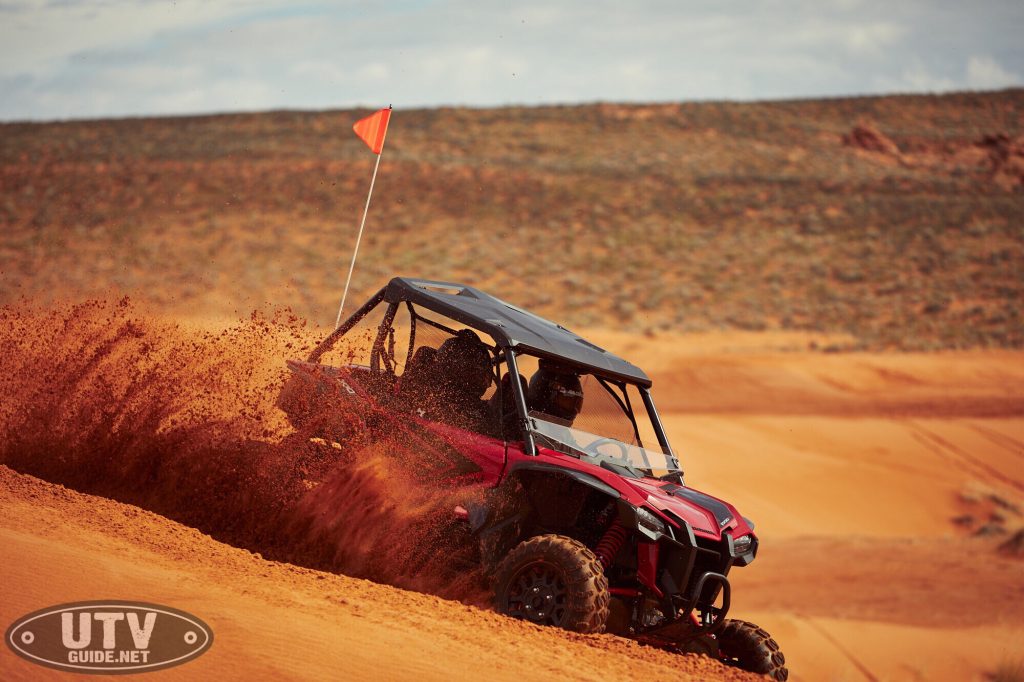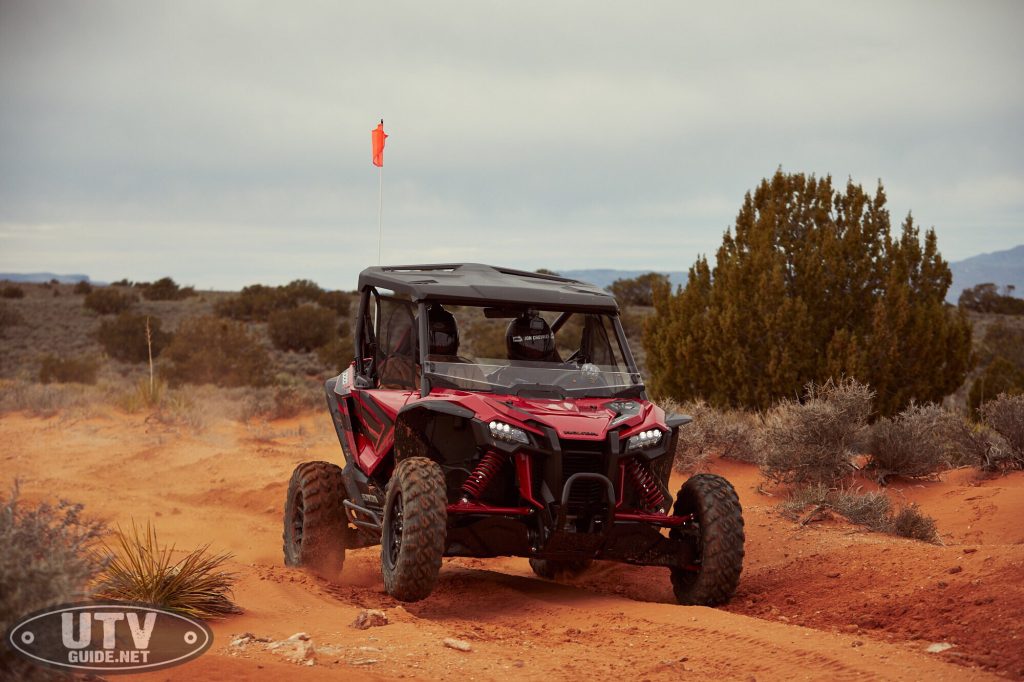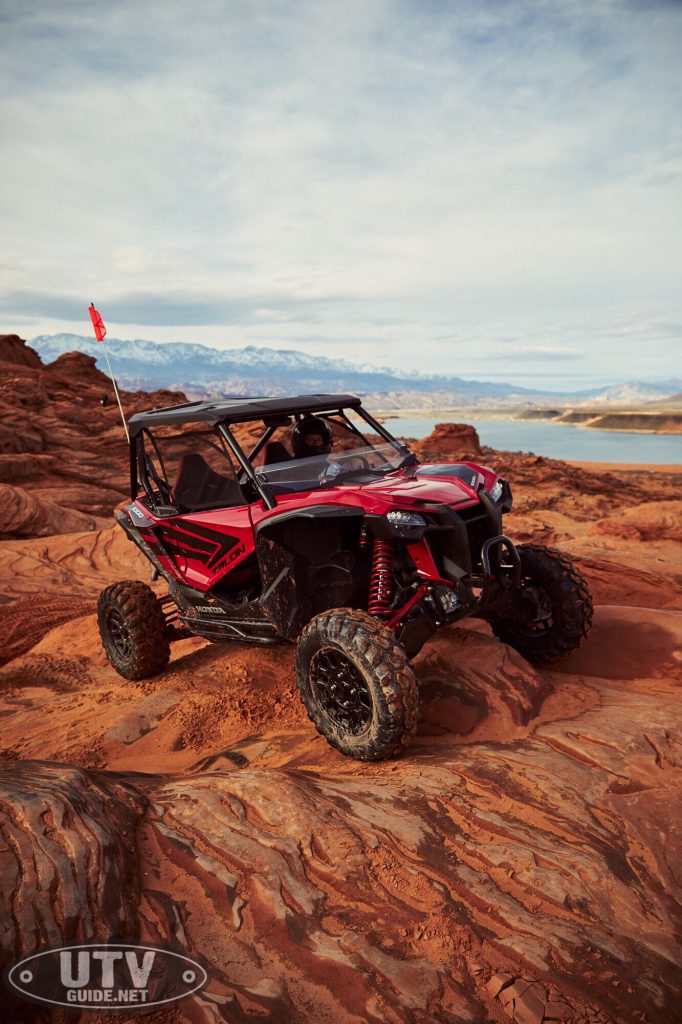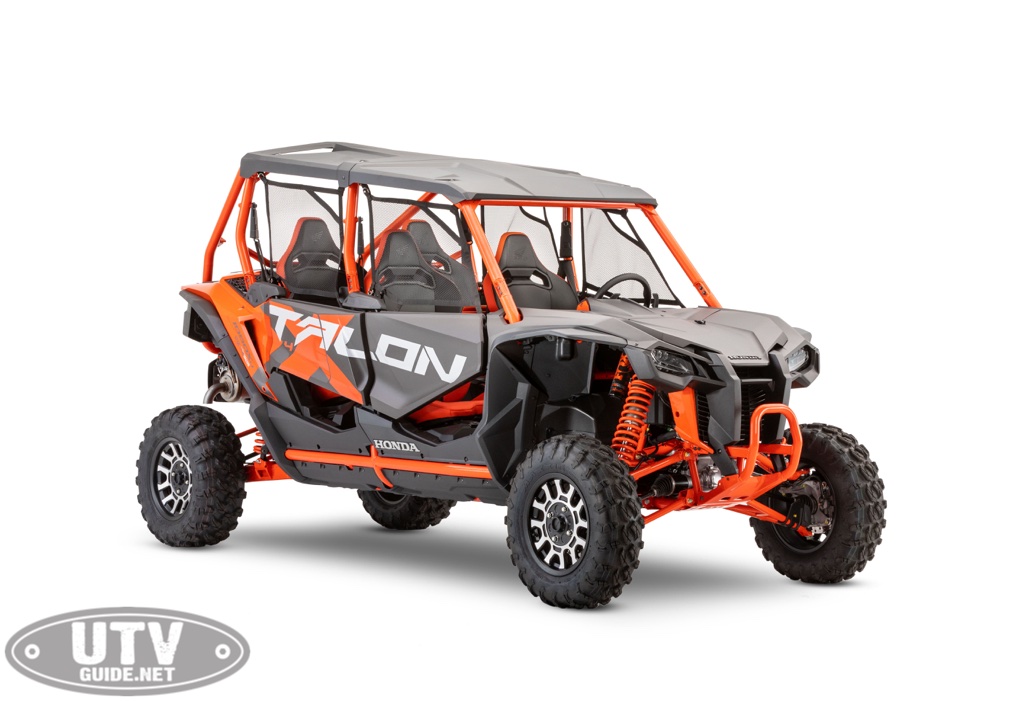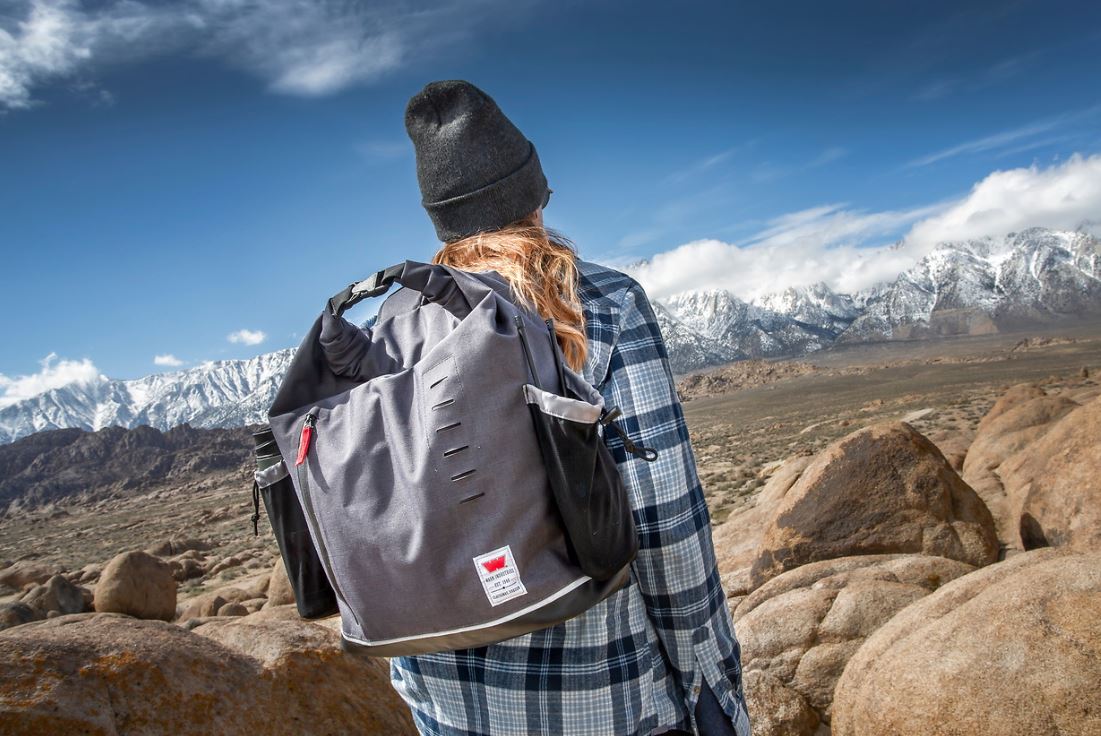By Jon Crowley
The all-new Talon 1000R is all the buzz around the UTV world and this is not a big surprise since it is Honda’s first sport UTV.
I was lucky enough to be invited to join other media for the press intro for the Talon 1000R and 1000X in Utah for our first test drive. Since there were two different units, Honda separated us into two different groups – one to drive the Talon 1000X in more of a trail type setting on Barracks Trail, and another in the Talon 1000R at Sand Hollow State Park.
Southern Utah has some super scenic riding areas, and Honda was wise to choose this spot for the release of the Talon since we could experience two different terrain nearby. While the Talon 1000X and 1000R both share the same chassis, engine and transmission, the 1000X is geared more towards trail riding with its’ more nimble footprint. The Talon 1000R is wider and longer with more suspension travel and is more suited to open desert riding.
Barracks Trail
I was in group one and we went to Barracks Trail to test the Talon 1000X on day one. Barracks Trail is about an hour drive from Hurricane, UT. The trail starts west of Coral Pink Sand Dunes and ends up in Caramel Junction. The plan was to do the entire trail in and out which crosses the East Virgin River several times.
Mother Nature had different plans for us with a bunch of rain and snow in days prior. Unfortunately we had to check up at the first river crossing due to high water flows, but the trail up to that point was super fun and scenic, albeit very wet and muddy.
Talon 1000X
The Talon 1000X is geared more to trail use with a smaller footprint than the 1000R. Its shorter wheelbase and tighter turning radius makes it more nimble.
Here are some key Talon 1000X specifications:
- Width – 64 inches
- Wheelbase – 87.6 inches
- Front Suspension – A-Arm with 14.6 inches travel
- Rear Suspension – 3 link trailing arm; 15.1 inches travel
- Ground Clearance – 12.7 inches
- Turning Radius – 17.7 feet
- Curb Weight (wet) – 1490 lbs.
- Fuel Capacity – 7.3 gallons
- Engine – 999cc liquid-cooled Unicam® OHC longitudinally mounted parallel-twin four-stroke
- Transmission – Six-speed automatic Dual-Clutch Transmission (DCT) with high/low subtransmission. Two drive modes with 2WD and I-4WD. Three shift modes (standard, sport, manual w/ paddle shifters).
- MSRP – $19,999
Barracks Trail was great for the Talon 1000X. I really noticed how well the vehicle turned along the twisty trail. The 1000X also felt very solid with no rattles or vibration.
I tried the transmission is every mode – AT (automatic), AT/Sport and MT (manual). I found that the AT/Sport mode suited my driving style best. In Sport mode, the transmission shifts more aggressively, holding onto shifts longer (higher RPM up shifts) and also downshifts quicker during braking. Honda has spent a ton of time on this programming and it works better than I expected. One thing that is really cool is in AT/Sport mode, you can override the current gear with a tap on the paddle shifter. This is great when you want to setup for a corner.
I found that Auto/Sport mode did a better job shifting during a fast-paced ride than I could using manual mode, and let me focus purely on driving without taking a hand off the wheel for a shift. This doesn’t seem like that big of a deal, but when you are driving fast with lots of turns, your hand isn’t always by the proper shift lever. With all three transmission modes, there is a little something for every driving style, and the great news for this is all three modes work well for the intended purpose – cruising or aggressive.
One thing I did notice is the suspension was a bit more harsh through chop and chatter bumps than I’d like. I think this can be attributed to the tire choice and air pressure. Both Talons come with 28×15 tires with very little sidewall. On the 1000X Honda was running 14PSI and on the 1000R they were at 16PSI. This pressure, plus very limited sidewall makes for a harsher ride that is harder to overcome with shocks alone. Apparently, due to front knuckle clearance, 15-inch wheels are necessary.
Sand Hollow State Park
Sand Hollow is a pretty unique riding area. It combines desert trails with a mix of sand dunes and rock crawling all in one place. I absolutely love to rock crawl here and it is a great place to test a new sport UTV.
Talon 1000R
Talon 1000R is wider and has a longer wheelbase and more suspension travel than the Talon 1000X. This makes the Talon 1000R much better suited for open desert and faster more aggressive driving in rough terrain.
Here are some key Talon 1000R specifications:
- Width – 68.4 inches
- Wheelbase – 92.7 inches
- Front Suspension – A-Arm with 17.7 inches travel
- Rear Suspension – 4+ link trailing arm; 20.1 inches travel
- Ground Clearance – 13.0 inches
- Turning Radius – 21.3 feet
- Curb Weight (wet) – 1545 lbs.
- Fuel Capacity – 7.3 gallons
- Engine – 999cc liquid-cooled Unicam® OHC longitudinally mounted parallel-twin four-stroke
- Transmission – Six-speed automatic Dual-Clutch Transmission (DCT) with high/low subtransmission. Two drive modes with 2WD and I-4WD. Three shift modes (standard, sport, manual w/ paddle shifters).
- MSRP – $20,999
With over 20-inches of rear suspension travel, controlling wheel geometry through the entire stroke can be difficult. Honda’s 4+ link rear suspension on the Talon 1000R keeps the toe change to 0.3 degree and that is something that I definitely felt in rough terrain. We bombed through some decently large whoops and it really impressed me how the Talon stayed pointed where it was aimed. I have two concerns regarding the rear suspension design. First is the way the main arm attaches to the bottom of the knuckle. It is very low and will affect approach angle for rock crawling. The second issue is the amount of moving parts. There are 4+ links here and while the geometry works very well, I always think about what happens when things go wrong and something breaks.
The dimensions of the Talon 1000R are unique amongst naturally aspirated sport UTVs. Most sit at 64-inches wide and the 1000R is over 68-inches. Plus the wheelbase is stretched. Couple this with 17/20 inches front and rear suspension and this gives the 1000R a bit of an edge over rough terrain.
Once again, the ride felt harsh over chop and chatter bumps. And since we were running 16PSI at higher speeds, it seemed even worse. I’d really like to see what the 1000R could do with 30-inch tires all around with the same offset wheels. Hopefully this won’t impact steering geometry much because the wheel offset in the rear will probably push the fronts out further.
In the dunes at Sand Hollow, the 1000R took us everywhere that we wanted to go. The Talon shines in the desert and will do as well as other naturally aspirated vehicles in the dunes. That being said, if you are primarily looking for a dune machine and want to keep up with your buddy’s in their turbo UTVs, the Talon probably isn’t the best solution for you. I am sure it won’t be long until the aftermarket has a boosted solution, but as of now, the Talon is NA only.
The biggest negative I have of the Talon 1000X and 1000R is tire and wheel choice. I would never choose such a small amount of sidewall for a sport UTV and think a 30-inch tire with same wheels front and rear should have been a much better choice.
Conclusion
Quality is evident in the Talon and this is no surprise coming from Honda. While many people think Honda is late to the game, they do not rush to get a new model out. Plus the powersports division of Honda USA can tap into many of the product development and testing facilities used in their automotive division. This discipline gave me confidence that every piece of the Talon has been thoroughly tested.
I was very pleased with the DCT transmission. It has a mode for everyone including the aggressive driver and someone that wants to explore at 30MPH. On the plus side there are no CVT belts to worry about. One negative I thought about is how larger tires will affect final drive ratio. It may prove difficult or costly to adjust gearing if that becomes necessary.
The cab is decently comfortable and well laid out. While I am not a huge fan of window nets for recreational driving, the nets on the Talon are fairly simple and work well without getting in your way. Seats are comfortable with slots for harness and a harness bar looks perfectly placed for aftermarket 4-point harnesses. Seat sliders and grab bar are simple to adjust and feel stout (no rattles) when locked in place.
The engine produces similar power to other naturally aspirated sport UTVs and looks like it is easy to maintain. Engine and transmission noise were very acceptable.
I am a huge fan of the chassis being the same for both 1000X and 1000R. This leads to higher quality because design and manufacturing is on the same platform. Plus aftermarket accessories will be more plentiful across both models.
I am looking forward to more seat time in the Honda Talon, and have my finger’s crossed that we can get a demo unit in the near future.
Likes
- Honda quality seen and felt throughout.
- Automatic Transmission with Sport Mode does well for aggressive driving.
- Ability to override automatic transmission setting with paddle shift on-the-fly for aggressive driving.
- High & Low Range gives riders more options for low speed technical riding.
- No front sway bar with good enough sway control from just the rear in high speed riding allows for more front articulation in rock crawling.
- Front locker works well for rock crawling.
- Seat sliders work well.
- Grab bar adjuster – easy to adjust and no rattles.
- Same chassis for 1000X and 1000R. Common platform affords for higher quality and more aftermarket accessories.
Dislikes
- Tire and Wheel choice – 28-inch tire on a 15-inch wheel doesn’t afford enough sidewall. Would prefer minimum 30-inch tire for 15-inch wheel.
- Prefer front and rear tire and wheel to be the same
- Low range should be lower to give more control for technical rock crawling.
- Dash not suited well to house radio and intercom.
- 1000R trailing arm attaches at bottom of knuckle reducing approach angle at rear tire.
- At 6’ 1”, I would like a bit more legroom.
- Not sure if a 32-inch tire will fit.
- Would like to see actual coolant temperature included in the gauge instead of a bar graph.

